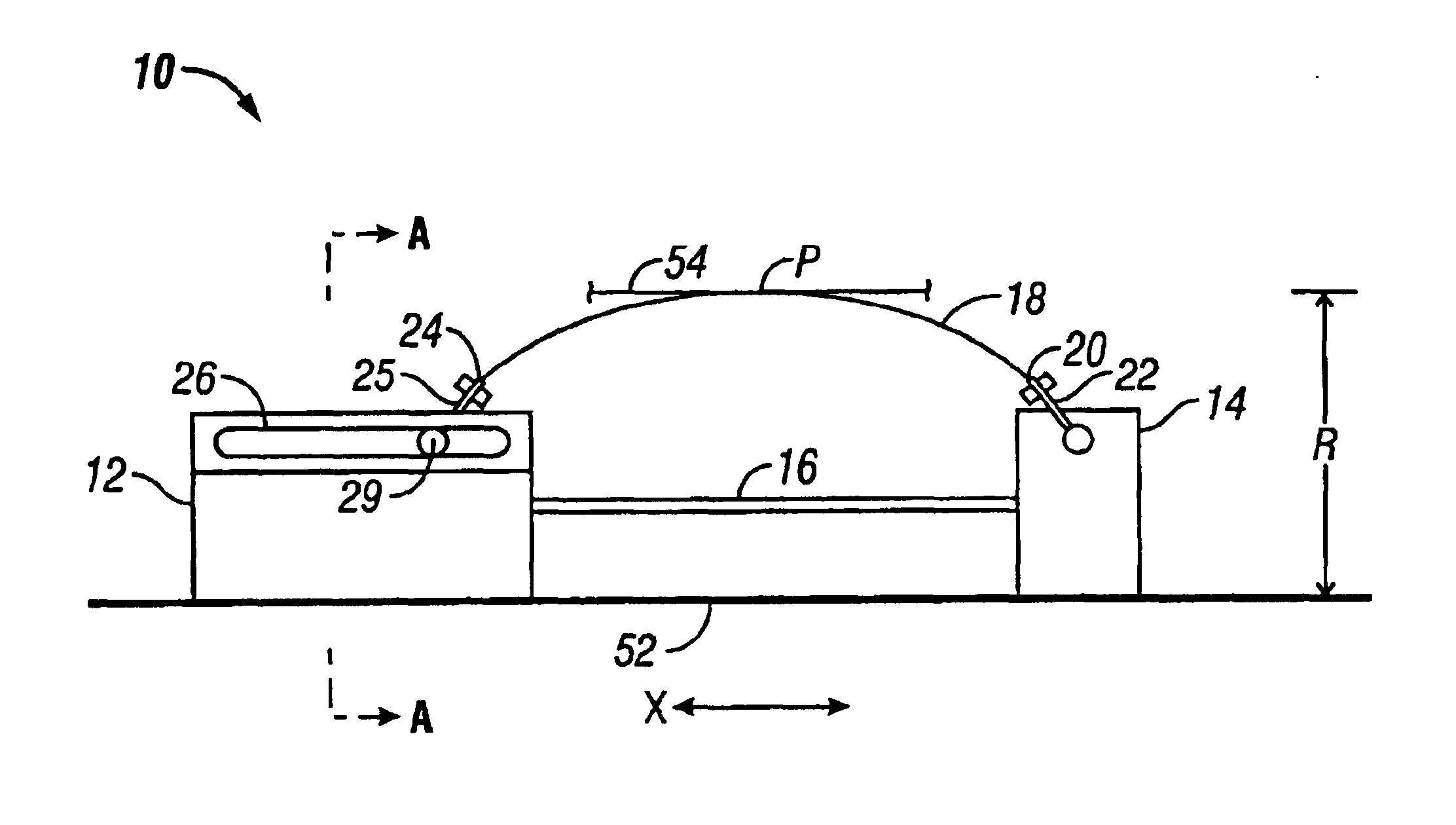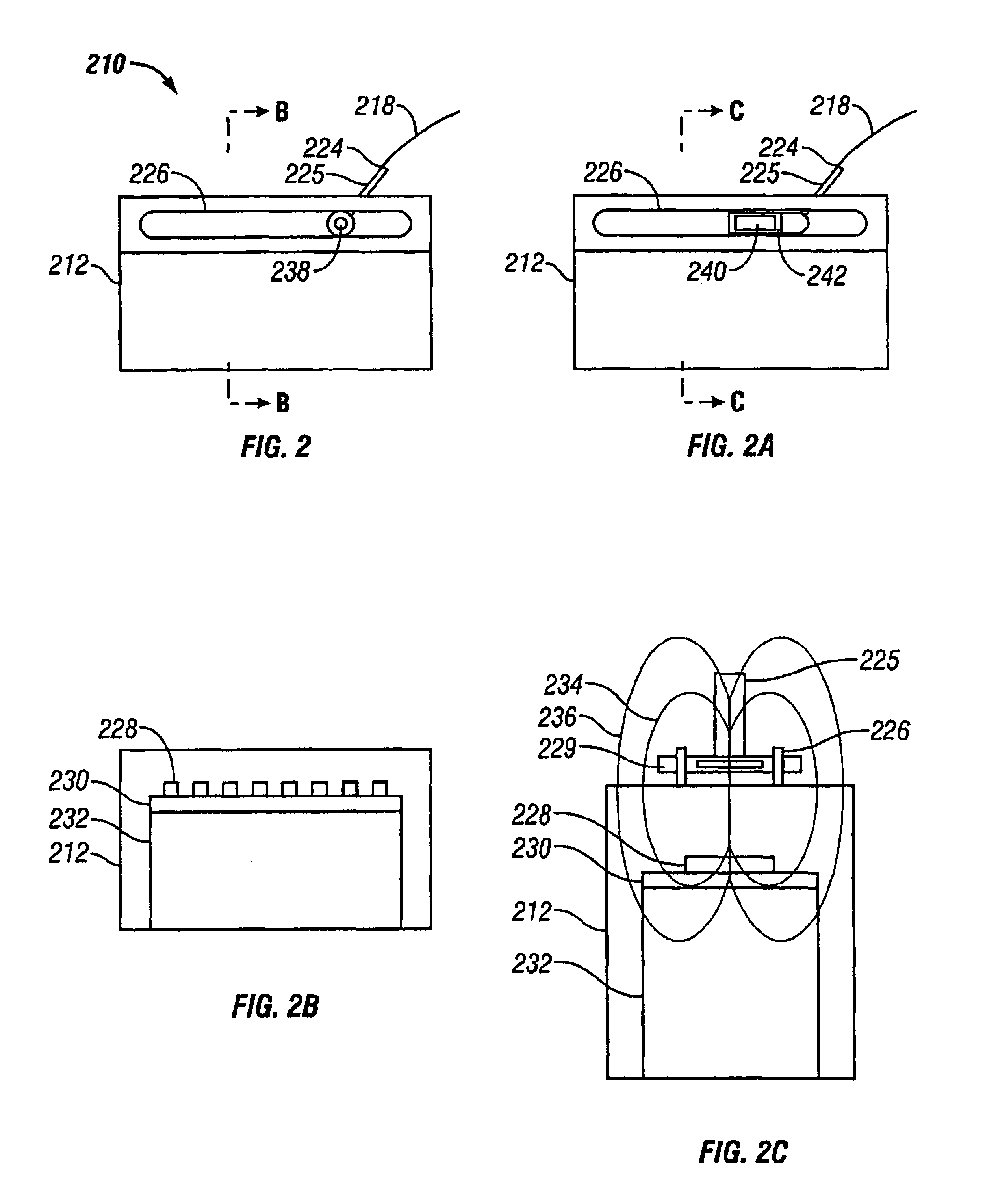Method and apparatus for measuring a distance
a technology of distance measurement and distance, applied in the direction of mechanical diameter measurement, survey, borehole/well accessories, etc., can solve the problems of limited accuracy of data, difficult maintenance, and often significant errors in the process of measuring these characteristics
- Summary
- Abstract
- Description
- Claims
- Application Information
AI Technical Summary
Benefits of technology
Problems solved by technology
Method used
Image
Examples
embodiment 210
FIGS. 2 and 2A-2C show another embodiment 210 of the distance measurement device. For simplicity, FIGS. 2 and 2A-2C only show the housing 212 portion of the distance measurement device 210. The remainder of the distance measurement device 210 is similar to the distance measurement device 10 described above. With the measurement device 210, however, the flexible member housing end 224 comprises a permanent magnet 238 included in the bracket 225 with the North-South field oriented radially. The magnet 238 produces a magnetic field inside the housing 212 indicated by flux lines 234, 236 shown in FIG. 2C. The magnetic field moves as the flexible member housing end 224 moves within the housing slide track 226, thus indicating a change in the distance “R”. An array of sensors 228 located inside the housing 212 detect the magnetic field of the magnet 238. By way of example only, the sensors 228 may be Hall-effect sensors. However, any suitable sensors for detecting the magnetic field may b...
embodiment 310
FIGS. 3 and 3A show another embodiment 310 of the distance measurement device. The distance measurement device 310 comprises a housing 312, a base 314, and a first flexible member 318 and operates in a similar manner to the distance measurement device 10. In addition to the first flexible member 318, the distance measurement device 310 also comprises a second flexible member 344 opposite the first flexible member 318. The second flexible member 344 is similar to flexible member 318, comprising a housing end 350 with bracket 351 and a base end 346 with bracket 348. The flexible member housing end 350 slides in a second slide track 327. The distance measurement device 310 may also comprise more than two flexible members, such as three or four flexible members, with the flexible members being azimuthally spaced around the housing 312. Thus, instead of measuring one radial distance “R”, the distance measurement device 310 also measures at least one additional distance “R2” to determine ...
embodiment 410
FIGS. 4 and 4A show another alternative embodiment 410 of the distance measurement device installed on a downhole tool 456, such as a downhole logging tool, and placed in a borehole 458. The distance measurement device 410 measures the diameter “D” of the borehole 458. The housing 412 and the base 414 may be integrated with or attached onto the downhole tool 456. When attached to the downhole tool 456 and placed downhole in the borehole 458, the flexible member 418 engages the side of the borehole wall 454. Additionally, opposite the flexible member 418, the downhole tool 456 engages the opposite side of the borehole wall 452. The flexible member 418 biases the opposite side of the downhole tool 456 against the side 452 of the borehole wall. The housing 412 and the base 414 are configured for attachment onto the downhole tool 456. Although, as shown in FIG. 4A, the housing 412 and the base 414 are generally “arc-shaped”, the housing 412 and the base 414 may be any configuration such...
PUM
 Login to View More
Login to View More Abstract
Description
Claims
Application Information
 Login to View More
Login to View More - R&D
- Intellectual Property
- Life Sciences
- Materials
- Tech Scout
- Unparalleled Data Quality
- Higher Quality Content
- 60% Fewer Hallucinations
Browse by: Latest US Patents, China's latest patents, Technical Efficacy Thesaurus, Application Domain, Technology Topic, Popular Technical Reports.
© 2025 PatSnap. All rights reserved.Legal|Privacy policy|Modern Slavery Act Transparency Statement|Sitemap|About US| Contact US: help@patsnap.com



